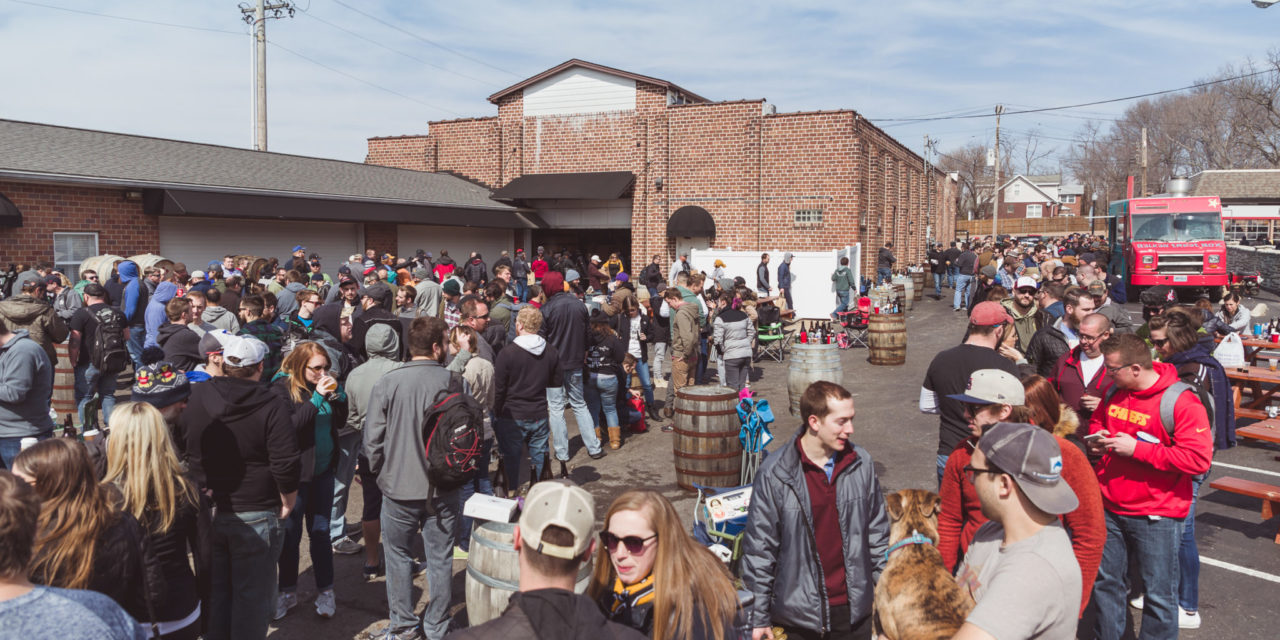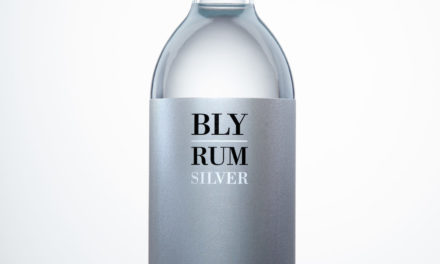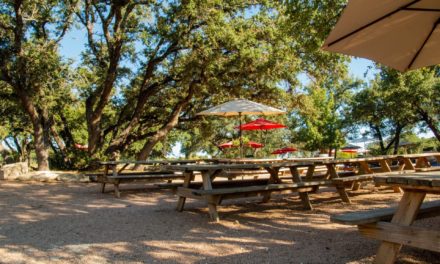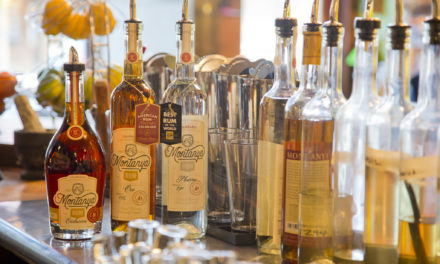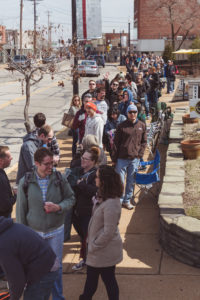
[Photo courtesy Side Project Brewing]
We did not bring a tent. We did not show up days beforehand. We weren’t, to the best of our knowledge, standing next to anyone who had packed a disguise, who had been hired via Craigslist, or who was an enterprising individual flipping rare beer for cash.
Those weren’t quite things yet.
We showed up 30 minutes early in the back lot of AleSmith Brewing Co., which was about to host its (at the time) largest-ever release of barrel-aged beers; we’d get to buy five bottles each. Back then, half an hour before launch placed us third and fourth in line. As the line grew, I remember AleSmith founder/CEO Peter Zien walking up and down, counting hundreds of beer-geek heads, worrying he didn’t have enough beer to make all of us happy.
I haven’t waited in a long line for beer in years—but I get why you would.
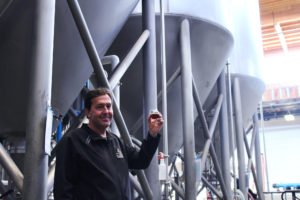
“On any given Saturday in San Diego, there could be up to a dozen special releases of various beers—sours, barrel aged, specialty ingredient—from different brewers.” —Peter Zien, AleSmith
An evolving model
A whole lot’s changed since then. For AleSmith’s early-on barrel-aged releases, which started around 2001, people were given tickets to exchange for bottles when they reached the front of the line. “That model stopped working,” Zien says, because, “When you get 400, 500, even 600 people showing up, you’re making your beloved customer stand in line all day.”
In 2012, AleSmith moved to a system that lets customers go online at a specified day and time to purchase limited-release beers, which can then be picked up within a six-week window from the brewery. It still offers a weekend, in-person option for customers who don’t mind standing (or who wish to stand) in line, with additional bottles available online the following Monday. While early bottle releases numbered in the hundreds, recent runs of its popular Barrel-Aged Speedway Stout have been upped to 5,000 bottles each.
AleSmith’s main challenge with these releases today, having been a leader in this space for 15-plus years, is the fact (and this may sound baffling to anyone outside of beer) that so many others are now doing the same thing. “On any given Saturday in San Diego,” Zien notes, “there could be up to a dozen special releases of various beers—sours, barrel aged, specialty ingredient—from different brewers.”
Beer releases are a huge component of the craft-beer scene today, with fans lining up for everything from ultra-fresh hazy IPAs to the same sorts of beers I was waiting for a decade back, such as carefully aged strong ales and sour ales that can take months, or years, to create.
Lots of people are trying to make the same magic happen today—often in ways that are never, ever going to work. So, first, we’ll look at how one might bottle lightning. Then we’ll hear from key producers who’ve negotiated the challenges that can arise when you do.
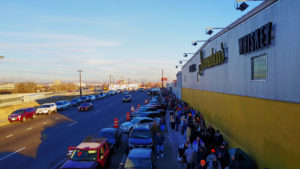
“This last year, the first guy got in line at 5:30 on Wednesday morning to camp out. For days on end. On the sidewalk. In late November. In Colorado.” —Rob Dietrich, Stranahan’s Colorado Whiskey
Whiskey camping
Stranahan’s Colorado Whiskey, like most producers cited in this story, did very little promotion to get the word out about Snowflake, its annual limited-release whiskies finished in various casks to create wholly unique expressions (hence the name). “We found people were interested in trying something unique, something unusual,” says master distiller Rob Dietrich, who took over the Snowflake program in 2011 when the Denver-based distillery started marrying different barrel treatments together for the final product. The 2017 Snowflake release combines whiskey aged in Cognac, Madeira, Sangiovese, port, and three different rum casks.
Early Snowflake releases were mostly sold through the distillery’s gift shop, with interest gradually picking up. Stranahan’s first formally announced its release date around 2009 and began seeing lines in 2010. With subsequent releases, folks showed up earlier and earlier. Eventually, of course, someone brought a tent.
In due time, that annual whiskey release on the first Saturday of December grew into something else.
The latest incarnation featured live music overnight before the release, early-morning food trucks, line prizes (including one-gallon barrels for the first 10 people), plus various amenities to make the wait more comfortable. Dietrich hung out late that Friday night talking with the Stranahan’s fans in line and chatting about the upcoming release. “This last year,” he notes, “the first guy got in line at 5:30 on Wednesday morning to camp out. For days on end. On the sidewalk. In late November. In Colorado.”
All this success, without any millennial-focused Venn diagrams or massive marketing onslaughts. “I’m a whiskey nerd,” Dietrich says in explanation. “By creating something unusual and special, I think people have picked up on my excitement. Then I get excited about them getting excited about it.” He sounds exactly like most of the brewers I know who make such things work.
The Snowflake release isn’t without familiar challenges. “One year, we had too many people show up; they waited in line the whole time only to get all the way to the store and find out we were sold out,” he recalls. “I never wanted to have that happen again.”
The distillery started a ticketing program the following year and placed a sign at the line’s end to avoid anyone waiting unnecessarily. “We definitely need to evolve with technology, especially as we’re drawing larger and larger crowds.”
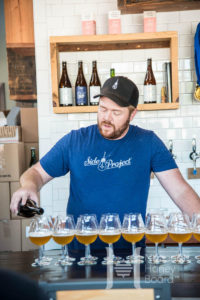
“Our business is built around new releases, because most of the time we run out of beer really quickly.” —Cory King, Side Project Brewing
Feedback loops
Having a highly anticipated release with lots of lines and media attention—or just a reliable stream of your most loyal customers—is awesome…right up to the point when you unexpectedly run out of product or realize someone’s gamed your system.
It doesn’t happen often, but it’s best to plan ahead to ensure it doesn’t happen to you.
For Cory King and Side Project Brewing in St. Louis, Mo., limited releases comprise a major part of the business. “We don’t distribute and we still don’t make a lot of beer,” King says. “It doesn’t make sense to have a retail shop that would be open every day.” The brewery is open weekends only, generally with lines for their sours and stouts. “Our business is built around new releases, because most of the time we run out of beer really quickly.”
Cultivating customer experiences has been a key part of Side Project’s focus. “If we’re going to have people come to our place and buy beer directly from us, which I prefer, we want them to fully experience who we are and what we’re trying to do here,” says King. The longest it’s taken to sell out of a bottle release is about two hours, and Side Project plans the lead time of its press announcements around expected demand. It also doesn’t announce bottle purchase limits in advance: “If you’re in line by noon, you’re guaranteed an allocation,” King says. The brewery also tries to have other beers—like its larger-batch saisons and table beers—available on draft for folks who miss out.
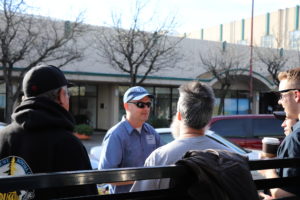
Russian River Brewer Vinnie Cilurzo greets patrons waiting for Pliny the Younger. [Photo courtesy Russian River Brewing]
“My biggest takeaway is that we have to think like criminals,” she says, when asked how producers might prep for these types of sketchy situations. “Most beer releases go sour because someone not related to the brewery found a way to exploit the situation while making a profit.” (This year, Russian River raffled off line-cutting tickets for Pliny the Younger for the first and likely only time—raising $114,000 the benefit its community after the recent devastating wildfires.)

“I’m a dad and I have two kids, so I can’t wait in line on a Saturday for four hours to get beer.” —Shane Welch, Sixpoint Brewery
Elsewhere, breweries are looking to do away with lines entirely. Sixpoint in Brooklyn, N.Y., introduced small-batch ordering to its app last fall, letting customers order limited-release cans from the brewery at a specific date and time, to be picked up at their leisure. “I’m a dad and I have two kids, so I can’t wait in line on a Saturday for four hours to get beer,” explains Shane Welch, Sixpoint founder, president, and chief visionary. “I have to take my daughter to dance class.”
The brewery is releasing a few canned products each month while gradually rolling out new functionality to bring app users closer to the step-by-step processes behind the beers. In late March, it paired the release of its Barrel-Aged Righteous rye ale (made with three different rye malts then aged in a blend of rye whiskey and bourbon barrels) with a “dessert” version of the same beer for maximum impact. Four-packs of Righteous were available across the network, while V Righteous (featuring Madagascar vanilla and a touch more sweetness) was sold through the app.
Could this be the future of special releases? Welch weighs in: “People love the act of anticipation, but that doesn’t mean they love waiting in a line.”
Press releases are generated outside of Spirited magazine and the information contained does not necessarily reflect the opinion of Spirited or its parent company, Sonoma Media Investments.

